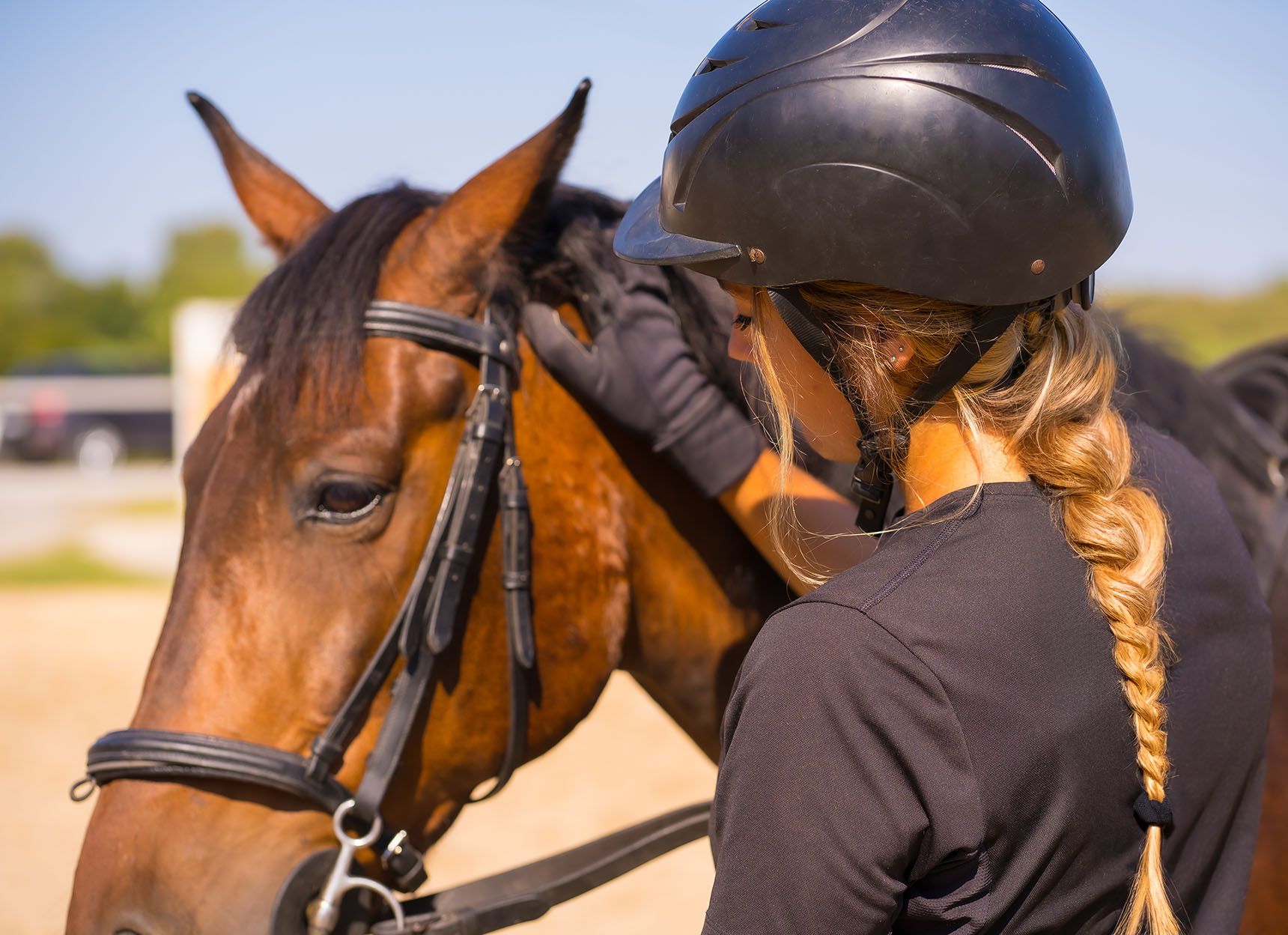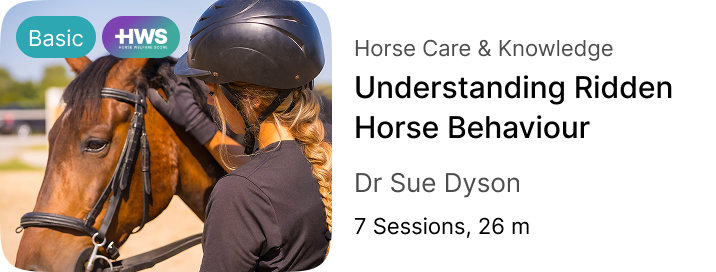Is Your Horse Really Misbehaving, or Is Something Else Going On?

When a horse resists contact, swishes its tail, spooks, or refuses to go forward, it’s often seen as a training issue or a sign of a difficult temperament. Riders are often taught to view such behaviors as training problems or temperament issues. But growing research shows these behaviors are frequently signs of discomfort or pain, and not disobedience.
Experts in horse welfare and behavior (including veterinarians, researchers, and trainers) are urging a new approach to horse training: Instead of asking ‘Why is my horse misbehaving?’, start asking ‘What is my horse trying to communicate?’
What the research says
Understanding the link between pain and performance
In a 2025 article for Veterinary Clinics of North America: Equine Practice, Dr. Erin K. Contino examines how pain often shows up as behavior or performance problems in ridden horses. Titled “The ‘misbehaving’ performance horse: is it ever behavioral?”, the paper argues that many signs of resistance, tension, or poor performance may not be behavioral at all, but clear signals of underlying pain or discomfort..
Dr. Contino’s review highlights several common causes of poor performance in horses, including musculoskeletal pain, subtle lameness, saddle fit issues, muscle disorders, respiratory problems, and gastrointestinal discomfort. Crucially, many of these conditions may not be visible in-hand but only become apparent when the horse is ridden. In fact, research shows that nearly 90% of FEI-level horses exhibit gait asymmetries in-hand, even though many are not identified as lame by their riders. Pain isn’t always obvious but it often reveals itself under the saddle, if you know what to look for.
A practical tool for riders
The Ridden Horse Performance Checklist
Equine lameness expert Dr. Sue Dyson developed the Ridden Horse Performance Checklist (also called the “pain ethogram”) to help riders spot pain-related behaviors during work.
Now available in the ‘Understanding Ridden Horse Behaviour’ training program in the Ridely app, this tool helps riders identify 24 signs of discomfort—grouped into three key categories:
- Facial markers: Pinned-back ears, tightly closed eyes, or frequent showing of the white of the eye.
- Body markers Tail swishing, tilted head,or unusual changes in head carriage or position.
- Gait markers: Uneven rhythm, reluctance to move forward, toe dragging, or cross-cantering..
According to Dr. Dyson’s research, if a horse shows eight or more of these behaviors during a typical ridden session, pain is likely a factor.
While this checklist is not a veterinary diagnosis, it empowers riders to spot early warning signs of discomfort and take action before problems escalate.
From observation to action
When a horse’s performance declines or resistance appears,, Dr. Contino recommends a full work-up including;
- Ridden evaluation
- In-hand lameness exam
- Saddle and bridle fit checks
Identifying the root cause early can prevent long-term issues and improve both welfare and performance.
Dr. Dyson’s approach complements this clinical pathway by helping riders become proactive partners in their horse’s welfare… In her Ridely training program, she teaches riders and horse owners how to:
- Score your horse using the 24-point checklist
- Track changes in behaviour and performance over time
- Understand what different behavior patterns may signal
- Know when to call the vet
By learning what to look for, riders can catch problems earlier—and give their horses the support they need.
A positive step toward better understanding
Understanding your horse isn’t about giving up on training. It means listening, observing, and responding in a way that prioritises your horse’s welfare and long-term soundness.
Many so-called “behavior problems” resolve when the root cause is addressed. Riders who learn to spot these signs early can lower stress, prevent injury, and build a more trusting partnership. Horses often show dramatic improvement once their needs are understood. As Dr. Dyson says in her Ridely program:
“If a horse doesn’t want to do something, it’s important to find out why.”
Want to learn more?
The full ‘Understanding Ridden Horse Behaviour’ training program is now live in Ridely. It includes:
- Video lessons and real-life case studies
- A step-by-step guide to using the checklist
- A knowledge check quiz to test what you’ve learned

This training is part of the Horse Welfare Score, which is a challenge in the Ridely app that rewards you for building your equine welfare knowledge!
Complete the program, pass a quick quiz, and earn points toward your Horse Welfare Score. You’ll move up the leaderboard, grow as a rider and an owner, and show your commitment to understanding your horse better!
Want the checklist for free?
Want a free, downloadable copy of Dr. Dyson’s 24-point checklist? Use it to assess your own horse and spot early signs of discomfort. Then watch the training program for more!



